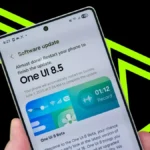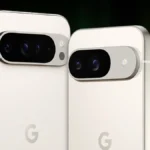7 Worst Apple Products Ever Made
Apple is known for revolutionizing technology with its sleek designs and user-friendly devices. From the iPhone to the MacBook, its innovation has set new benchmarks for the industry. However, even giants make mistakes along the way.
Throughout its history, Apple has released a few products that fell short of expectations. From design flaws to poor usability and high prices, these missteps remind us that perfection isn’t guaranteed, even from the world’s most admired tech company.
1. Apple III
Launched in 1980 as a successor to the Apple II, the Apple III was supposed to take business computing to the next level. Instead, it became one of Apple’s earliest disasters. The computer suffered from major hardware issues, frequent crashes, and heating problems that caused components to fail.

The product was rushed to market without proper testing, leading to widespread criticism. It marked the first time Apple faced a serious challenge to its reputation for quality and innovation.
2. Power Mac G4 Cube
The Power Mac G4 Cube looked stunning, a transparent acrylic cube that felt more like a museum piece than a computer. But beneath the beautiful exterior, the product failed to impress consumers.

It was extremely expensive, lacked easy upgrade options, and even suffered from cracks in its case. Despite being ahead of its time visually, it failed commercially. The G4 Cube became a reminder that design alone cannot guarantee success.
3. Apple Newton
In the early 1990s, Apple tried to create a futuristic personal digital assistant called the Newton. It featured handwriting recognition and aimed to bring portable computing to the masses.

Unfortunately, it was plagued by poor accuracy, slow performance, and a hefty price tag. The handwriting recognition often failed to understand users, leading to widespread mockery. Although it was innovative for its era, the Newton became one of Apple’s biggest early flops.
4. Apple Pippin
In the mid-1990s, Apple attempted to enter the gaming market with the Apple Pippin, a hybrid of a computer and gaming console. The idea sounded ambitious, but the execution fell flat.
The Pippin was expensive, lacked strong game titles, and offered little to separate it from more powerful consoles. With limited marketing and an unclear identity, it failed to attract both gamers and developers, quickly disappearing from the market.
5. Apple USB “Hockey Puck” Mouse
When Apple launched the colorful iMac G3, it introduced a round USB mouse, nicknamed the “hockey puck.” While it matched the design of the iMac perfectly, it was one of Apple’s worst ergonomic products ever made.
Its circular shape made it nearly impossible to use comfortably, and its short cord didn’t help either. The mouse became infamous for poor usability and quickly earned a reputation as one of Apple’s most disliked accessories.
6. Siri Remote
The Siri Remote for Apple TV was designed to be minimal and futuristic. However, it ended up frustrating users instead of delighting them. Its slim design made it slippery, its buttons were confusing, and users often picked it up the wrong way around.

Many complained that the touchpad was overly sensitive and that the device prioritized looks over practicality. It was another case where Apple’s obsession with minimalism clashed with everyday usability.
7. Butterfly Keyboard in MacBooks
Between 2015 and 2019, Apple introduced the controversial “butterfly keyboard” mechanism in its MacBook lineup. The idea was to make laptops thinner and sleeker but the outcome was disastrous.
Keys would get stuck due to dust or small particles, causing massive frustration among users. The failure rate was so high that Apple had to launch repair programs and eventually replace the design completely. This mistake proved that even Apple can over-prioritize design at the cost of reliability.
Lessons from Apple’s Failures
These seven products show that even the world’s most innovative company can falter when ambition overtakes practicality. Apple’s failures share a few common traits:
- Overemphasis on form over function
- Poor usability or user experience
- Weak market research before launch
- Pricing that didn’t match real-world performance
Yet, Apple’s ability to learn from its mistakes is what sets it apart. Many of these failures laid the groundwork for future successes, proving that innovation often requires trial and error.
FAQs
Q1: What was Apple’s biggest product failure?
A1: The Apple III is often considered the company’s first major failure due to its hardware issues and unreliable performance.
Q2: Why do some Apple products fail despite the company’s success?
A2: Apple’s focus on design innovation sometimes leads to usability or reliability issues that outweigh the visual appeal.
Q3: Are these failed products valuable now?
A3: Yes, many of them are now collectors’ items because of their rarity and historical significance.
Q4: Did Apple learn from these mistakes?
A4: Absolutely. Apple’s later products, like the iPhone and iPad, show that the company refined its testing, usability, and reliability processes.
Q5: What can consumers learn from Apple’s product failures?
A5: Design should never come at the cost of function. The best technology blends beauty, performance, and reliability seamlessly.
Also Read- iOS 26.2 Beta: 9 Exciting New Features Coming To Your iPhone


















